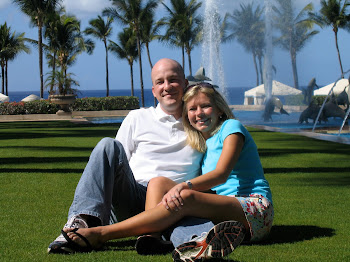We are meeting first with someone from her audiology treatment team who has been working with infants and kids with hearing loss for a number of years. She'll be guiding us through what to expect as Ryan starts begins a series of more hearing tests, gets molds for hearing aids (which will most likely not be beneficial except to provide familiarity with having something on her ears), and is visited frequently by Early Interventionists for further evaluation and determination of her speech/language development. Amanda, the person we are seeing, will be counseling us on the services we need to be seeking for Ryan as well as the questions we should be asking the audiologists, the ENT, the geneticist, and the Early Intervention people.
Also this week, Ryan will receive an evaluation for Early Intervention in PA. Since she has bilateral profound hearing loss she automatically qualifies for this state funded program. The person will be doing a baseline evaluation and she'll then build a 'family plan', per se, for Ryan as we begin to understand how to best communicate with her during this time and during her development. If Ryan is a candidate for cochlear implants (fingers crossed), most likely she'll be able to catch up quickly to per peers in regard to speech and language development. This determination, however, will not come for several more months after a MRI is completed. She is not able to do the MRI until she is big/old enough to handle general anesthesia.
Sean and I are looking forward in anticipation to get to 'normal'. We keep watching all these 'success stories' of infants diagnosed with profound hearing loss that now have 'ears' (i.e. cochlear implants) and are just as normal as their peers. Although we have a long and emotional road ahead, we are certainly hopeful and praying for a successful outcome as all these other kiddos.
In the meantime, some fun facts that we know about infant hearing loss today:
- Hearing loss is the most common birth defect in newborns.
- The majority of children with hearing losses are born to parents who have normal hearing.
- In the United States, 33 babies are born every day with a hearing loss.
- There are many different types and degrees of hearing loss.
- Children as young as one month of age can be fitted with hearing aids.
- Most children with hearing losses have no other disability.
- When a child’s hearing loss is diagnosed and treated early, he or she can develop language skills like a child without a hearing loss.




No comments:
Post a Comment